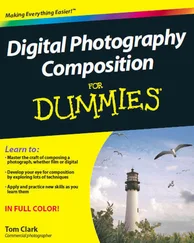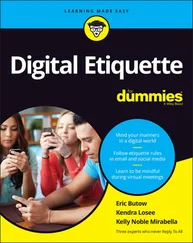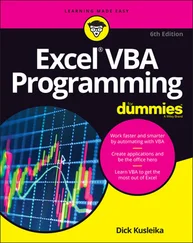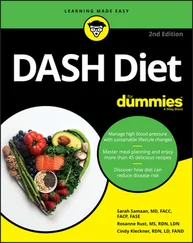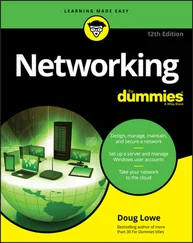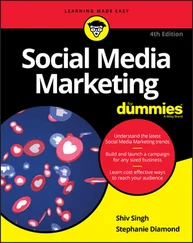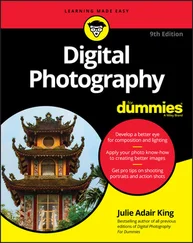Zeroing in on what matters
In the previous section, we establish the idea that a specific and relevant gated offer works best for generating high opt-ins. But what does making the offer specific and relevant entail? High-converting gated offers include one, or a combination, of the following five aspects, in a specific form:
A promise
An example
A shortcut
A solution
A discount
Including at least one of these five items will help your conversion rates. The following sections take a look at each of these items.
Making a specific promise
Making a specific promise is one of the simplest things you can do to increase the number of leads you receive from a gated offer. Look at the offer that you’re delivering and think about how you can make the benefit of the offer more evident. Consider how you can speak to the specific desired end result of your prospect.
Craft a clear promise and then make sure that your promise is in the title of your gated offer. Generic or clever titles generally decrease the conversions on your gated offer. Many marketers are guilty of coming up with cutesy titles or using industry jargon in the title that your market may not understand. In your gated offer’s title, talk less about your product and more about your target audience. Specifically communicate, in the gated offer’s title, the benefit the gated offer will provide that target audience. Speak to the conversation that is going on inside the mind of your customer, not the one that you’re having around the business table. Ask yourself, what are your target audience’s concerns, fears, or desires? Think of the desired end result that your customer is seeking, and put that in the title. The gated offer shown in Figure 3-2 delivers a specific promise that resonates with its market.
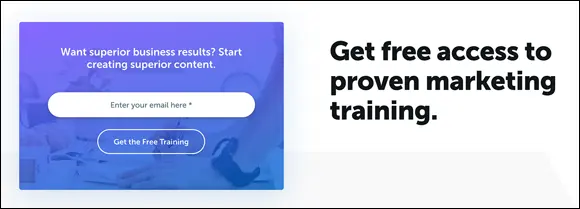
Source: https://copyblogger.com/
FIGURE 3-2:Copyblogger’s gated offer clearly states what people can expect when they input their contact information.
Giving a specific example
In our experience, the best way to give a specific example in your gated offer is to deliver it in the form of a case study. If you have examples of real customers and prospects who have overcome problems with your product or service, these can work well as gated offers.
For instance, if your company sells surveillance cameras to universities, you might create a case study entitled “How State University Reduced Campus Crime by 73 Percent” that details how the university used surveillance camera technology to reduce acts of crime on the state campus. This headline clearly states the benefit and uses an example to add specificity to the gated offer.
Offering a specific shortcut
A gated offer that can save a person time is appealing and often converts well. For example, a gated offer that delivers a list of healthy snacks a person can eat throughout the day is a useful shortcut for someone looking to eat a more nutritious diet.
Answering a specific question
The fourth way you can make your gated offer more specific is by raising and answering a specific question. If the answer to the question is valuable, your prospects opt in to get the answer to that specific question. After you’ve answered the question, you will have delivered on your promise and helped to establish yourself as an authority on the subject, which in turn helps build trust and moves the prospect closer to becoming a customer.
Delivering a specific discount
Price discounts can be a great way to spur sales, and many companies offer coupons that slash prices in the hope of creating a buying frenzy. But instead of handing out discounts, consider asking a prospect to opt in to receive the discount. For instance, your gated offer might say, “Join our Discount Club and receive 10% off any order.” This wording is effective because it specifically tells the prospect how much she’ll save.
Generating leads with educational content
In this section, we discuss five forms that your gated offer can take. These gated offers deliver value by educating the lead on a particular topic related to your brand while also highlighting features of a solution, product, or service you provide.
 Your gated offer does not have to be the length of a Tolstoy novel. Besides being ultraspecific, gated offers should be easy to consume — they should not be a 14-day course or a 300-page book. Rapid consumption of the gated offer is important because you want to provide value to your lead as quickly as possible. The faster your gated offer provides value, the quicker a lead can become a paying customer. Because most gated offers can be sent digitally, they can be delivered instantly, allowing the lead to receive the value of the gated offer quickly. Ideally, prospects receive value from your gated offer within minutes of giving you their contact information. Speedily delivering value helps to build a positive relationship with leads, as well as to quickly move them through the customer journey. (Turn to Chapter 1for more information on the customer journey.)
Your gated offer does not have to be the length of a Tolstoy novel. Besides being ultraspecific, gated offers should be easy to consume — they should not be a 14-day course or a 300-page book. Rapid consumption of the gated offer is important because you want to provide value to your lead as quickly as possible. The faster your gated offer provides value, the quicker a lead can become a paying customer. Because most gated offers can be sent digitally, they can be delivered instantly, allowing the lead to receive the value of the gated offer quickly. Ideally, prospects receive value from your gated offer within minutes of giving you their contact information. Speedily delivering value helps to build a positive relationship with leads, as well as to quickly move them through the customer journey. (Turn to Chapter 1for more information on the customer journey.)
Reports (also called guides ) are among the most common types of gated offers and are usually mostly text and images. Reports usually offer facts, news, and best practices that are relevant to your industry and your target market. If you use a report as your gated offer, however, be careful. Reports can be lengthy and complex, thus they often take more time to be consumed. This means that the report will take longer to deliver on its value. Therefore, whenever possible, keep your reports as succinct and specific as possible so that they can quickly deliver their value and help to establish or reinforce a positive relationship with your lead or customer.
As is true of a report, a white paper is an authoritative guide that concisely informs readers about a complex issue and aims to help leads solve a problem, or make a decision. Although the white paper helps to educate your prospects, it also helps to promote your business’s products or services. White papers can often be very effective at generating business-to-business (B2B) leads.
Primary research is research that you or your business collects. It can include interviews and observations. When you take the time to create new research, you’re providing a service and saving others from having to do their own primary research, which is why people opt in to a gated offer of this nature.
If you’re an expert in your field, or can partner with one, you can host an online training via a webinar that teaches or demonstrates a topic that is relevant to both your brand and to your target audience. You create a gated offer that requires prospects to fill out a registration form for the webinar, thus capturing prospects’ contact information and allowing you to follow up with them after the webinar takes place.
In some cases, the most desired pieces of information for your market are pricing and descriptions of your products or services. This information helps people who are interested in buying your product or service make informed decisions. The sales material gated offer tends to be longer, in text and content examples such as images or customer testimonial videos, than the other examples in this chapter so far. However, this length is necessary because a person generally needs more information before making a purchase, especially if a big-ticket item is involved. However, this also means that anyone who opts in is more likely to be a qualified lead. A qualified lead is someone who is actively seeking more information about your products or services because he or she is interested in buying from you. (An unqualified lead may not have been nurtured enough to make a purchase yet, or isn’t sure of what your company does or even what solution he or she seeks.)
Читать дальше
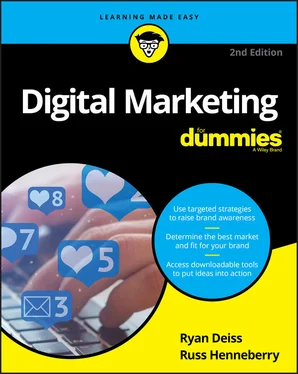

 Your gated offer does not have to be the length of a Tolstoy novel. Besides being ultraspecific, gated offers should be easy to consume — they should not be a 14-day course or a 300-page book. Rapid consumption of the gated offer is important because you want to provide value to your lead as quickly as possible. The faster your gated offer provides value, the quicker a lead can become a paying customer. Because most gated offers can be sent digitally, they can be delivered instantly, allowing the lead to receive the value of the gated offer quickly. Ideally, prospects receive value from your gated offer within minutes of giving you their contact information. Speedily delivering value helps to build a positive relationship with leads, as well as to quickly move them through the customer journey. (Turn to Chapter 1for more information on the customer journey.)
Your gated offer does not have to be the length of a Tolstoy novel. Besides being ultraspecific, gated offers should be easy to consume — they should not be a 14-day course or a 300-page book. Rapid consumption of the gated offer is important because you want to provide value to your lead as quickly as possible. The faster your gated offer provides value, the quicker a lead can become a paying customer. Because most gated offers can be sent digitally, they can be delivered instantly, allowing the lead to receive the value of the gated offer quickly. Ideally, prospects receive value from your gated offer within minutes of giving you their contact information. Speedily delivering value helps to build a positive relationship with leads, as well as to quickly move them through the customer journey. (Turn to Chapter 1for more information on the customer journey.)